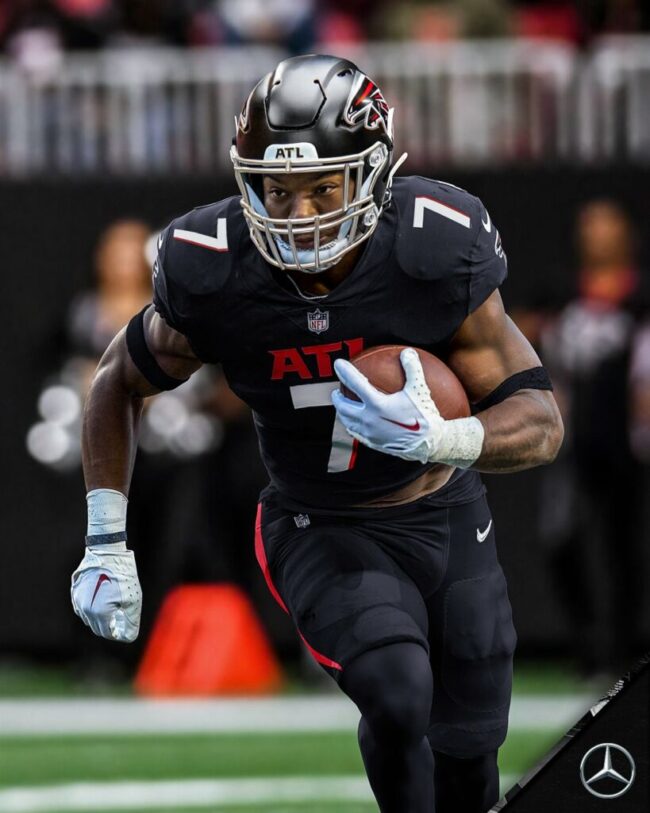-
 July 15, 2024, 3:04 pm
July 15, 2024, 3:04 pmLast Updated on August 6, 2025 12:18 pm by Jon Mosales | Published: July 15, 2024
How to win trades and influence people
One of my all-time favorite movie scenes is in Rounders when Mike McDee walks in on the judge’s poker game and just blind reads every hand. When it comes to trading, sadly I’m not Mike McDee, but I am Worm. I am a trading savant/hustler, I propose trades like an auctioneer, and I almost always win. In any one league I trade more than all the other GMs combined. Trading is a science and you have to consider all the angles, but it’s also an art and art is in the eye of the beholder. The key to trading isn’t trying to humiliate the other side. It’s ideally a move that makes both teams better and there is nothing wrong with losing a trade in the short term, in order to win in the end.
There are two types of fantasy GMs in this world. Those who like to make trades and those so terrified of losing a trade they won’t ever risk trying to win one. Don’t be the latter, trading represents 37% of the pleasure I derive from fantasy. A league without trades is like watching a movie in black and white while the sound isn’t in sync. It’s only fantasy, it’s not reality and unless you are in a dynasty league, you get to reset your roster each season. Can you imagine how many trades would happen in real sports leagues if the rosters got reshuffled every year.
Here is the secret about trading that they don’t tell you about when you sign up for your fantasy league. No one really knows anything. The future is unpredictable and especially in fantasy football, injuries are often the final arbiter of who wins a trade. You have to live by the process, not the result. Make trades, take risks and always declare yourself the public loser and private winner of every trade. If you can’t win the league, at least win the battle of psychological warfare. Everyone wants to trade with a presumed chump and if you get the reputation as a shark, no one is going to risk letting you bleed them out.
If you are going to trade, there are a certain set of guidelines you should follow as you take a spin down the fantasy trading rabbit hole.
- Trade Construction
The simplest trade in the world is a one-for-one. The problem is that it’s too simple and as a result very hard to pull off. Here’s what happens. I propose a trade to a GM and the only thing he does is compare who was drafted higher. If I offer my third-rounder for his second, even if they were drafted four spots apart, that’s the only thing he can see. Once the draft ends, it’s over. Don’t get attached to where everyone was taken. The best trade is the two-for-one as it scrambles the values just enough that two people can approach the same problem and get two different answers. Anything more than a two-for-one and you are getting into blockbuster territory and leaving too much fate up to the gods. Keep it simple, stupid. The two-for-one is where you should live and the only real question is should you be a two or a one? Now, aside from the existential ramifications, deciding which side of the trade you should fall on depends more on league size, your activity on the wire and your depth than the actual players involved. Don’t play the players, play the league. If you are in a 12-man league or less, you almost always want to be on the side of the one. That means you trade two semi-studs for his one super-stud. That goes double-down if you are active on the wire. In a 12-man league, you can find usually find 80% replacement value for one of the players you just moved. In a 14-team league, the wire is less friendly and it comes down to personal belief. Do you play fantasy for the ceiling or the floor? If you want to build a super-team and have a high risk of winning and/or flaming out, then you want the one. If your goal is depth and simply winning the war of attrition and being the last team standing, then you want the two. There is no right answer, but if you are a two, then you want to try finding and trading with a one. It’s just math and the law of attraction.
Want to get access to Jon’s articles? You’ll need to have a SportsEthos NFL FantasyPass membership. Click here to learn more and sign up!

